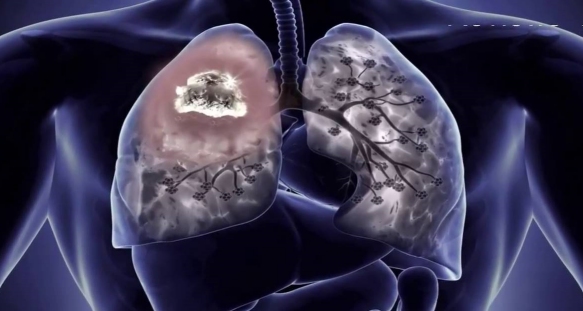The Stages of Mesothelioma
Staging is a key part of mesothelioma diagnosis and treatment.
Mesothelioma staging allows doctors to determine the progression of the cancer and to help in the planning of the best course of treatment.

The stages of mesothelioma cancer are based on tumour size and how far the tumours have spread in the body. The location and size of tumours has a direct impact on the symptoms a person may feel.
Mesothelioma tends to be diagnosed at a late stage because in the early stages of there are few symptoms. The cancer is small in early stages and does not affect the body the way larger, late-stage tumours do.
Pleural mesothelioma is the only type to have its own recognized staging system, called the TNM Staging System.
Doctors use the results from diagnostic tests and scans to answer these questions:
Tumour (T): How large is the primary tumour? Where in the body is it located?
Node (N): Has the tumour spread to the lymph nodes? If so, where and how many?
Metastasis (M): Has the Mesothelioma cancer spread to other parts of the body? If so, where and by how much?
Other staging systems include:
The Brigham system which was developed at Brigham and Women’s Hospital in Boston U.S.A by Dr. David Sugarbaker to help identify which pleural mesothelioma patients would respond best to surgery.
The Butchart systemwhich was developed by Dr. Eric Butchart to help doctors identify which pleural mesothelioma patients could handle aggressive treatment with surgery.
Stages of Pleural Mesothelioma, based on TNM Staging
STAGE 1
Mesothelioma cancer cells are localized in the mesothelial lining. Most patients do not experience symptoms at this stage as the tumours are too small to cause pain or breathing difficulties. If correctly diagnosed, then surgery to remove the tumours is the prefered treatment option. Multimodal therapy is another option using chemotherapy and radiation therapy.
Patients diagnosed at the early stage have the best prognosis with average life expectancy of nearly 2 years.
STAGE 2
Mesothelioma has spread to both layers of the pleura on one side of the body, and has enlarged to form a tumour mass on the pleural tissue around the lungs, or has started to spread into the diaphragm muscle or the lung tissue.
It is rare for symptoms to appear in stage 2, but patients may experience a slight cough and have difficulty breathing during exercise and may be mis-diagnosed as a common cold. People with Peritoneal Mesothelioma patients may lose weight and feel bloated.
The Mesothelioma cancer can still be treated with surgery, chemotherapy and radiation therapy, with life expectancy of around 20 months with surgery.
STAGE 3
Cancer cells spread to nearby organs and lymph nodes. Symptoms may include a dry cough, wheezing and chest pain. Peritoneal Mesothelioma patients may have diarrhea or constipation and have sharp pains in the abdomin and experience some bloating. Patients with either Peritoneal or Pleural mesothelioma may lose weight and have a fever and night sweats.
Surgery may be an option depending on the size and location of the tumours but most stage 3 patients will be ineligible for surgery. Chemotherapy is more common at this stage to improve life expectancy and ease symptoms and doctors will offer palliative options to control the pain. Some Stage 3 patients who are not too poorly may join clinical trials to try new immunotherapy options or chemotherapy drugs.
If surgery is still an option, then average life expectancy at stage 3 is around 18 months.
STAGE 4
Mesothelioma Cancer cells have metastasized throughout or beyond chest or abdominal cavity, it could be present in the liver, bones or elsewhere. The cancer cannot be removed by surgery at this stage because of the spread, though less invasive surgery may be still be used. At this stag, mesothelioma is usually treated with chemotherapy with palliative care to ease the pain. Stage 4 mesothelioma patients may qualify for clinical trials for testing the latest immunotherapy therapies.
At this stage, pleural mesothelioma patients find breathing difficult, have trouble swallowing and can have pains in the chest. Patients with peritoneal mesothelioma may have digestive problems, a swelling of the abdomen and have bowel obstruction. In both cases patients may experience weight loss, loss of appetite, nerve pain, muscle weakness, fatigue and fever. Average life expectancy at stage 4 is around 15 months.
Stages for Peritoneal, Pericardial & Testicular Mesothelioma
Pleural mesothelioma is the only Mesothelioma type that has an officially staging system.
Peritoneal (abdomen) Mesothelioma Staging is close to being released, but requires more data
Pericardial (heart) Mesothelioma Staging does not have enough data to have a staging system as it is very rare
Testicular Mesothelioma Staging does not have enough data to have a staging system. It is even rarer than Pericardial Mesothelioma

More information about mesothelioma
Mesothelioma prognosis and staging
Determining the amount and extent of mesothelioma tumour cells in the body
Types of Malignant Mesothelioma. Information about the disease
Mesothelioma Symptoms - Pleural, Peritoneal and Pericardial
Mesothelioma Diagnosis, including Prognosis and Staging
Mesothelioma Treatment Options: Surgery, Radiation Therapy and Chemotherapy
Author
Kathy Cooke MA. BSc
Cancer consultant and advisor
Kathy has worked in the cancer field for over 30 years. She was course leader for the MSc in Radiotherapy and Oncology at University of Hertfordshire. Then pre-treatment radiotherapy manager at the Cromwell Hospital in London and Partnership Quality Lead for Macmillan Cancer Support.. Read more >













